 |
| This map of Vietnam shows the general location of the Decca Central and South chains. Refer to the map below for station sites. (Map courtesy http://www.asiatravel.com) |
DECCA VIETNAM BACKGROUNDDecca Navigator Systems, Inc. was under contract with the United States government to train U.S. helicopter pilots on Decca Navigator using civilians. Decca's employees would travel from base to base, often as "non-manifested" passengers, with the latest technology to assist and train U.S. pilots. While these employees were not members of the military, they were an integral part of the war effort. Decca Vietnam was based in Saigon at the entrance to the heliport at Tan Son Nut air base. The monitor site and control center for both the Central and South Chains was in Qui Nhon, Platoon North HQ.
Ken Penman was a Decca instructor. He recalls " I was in Vietnam from May 1965 until March 1966 and again in 1968 then left around March 1969. When I returned from 'Nam in 1966, I was privileged to become an instructor in the Decca Course, which was being taught by a British chap that was very new to the system. It was a case of "training the trainers". We were to be the first group of military instructors who would teach the system to those who would man the sites in Vietnam. The students mostly came from Ft Monmouth, New Jersey after completing 9 weeks of Fixed Station Transmitter Repair training. Following that was another nine weeks of Decca training at Fort Gordon, Georgia".
Christopher Rose was employed by Decca in Vietnam. It was a very long time ago, but he remembers some of the details. "Originally the Decca chain installed in the early 1960's (maybe 62/63?) was intended for use by the US Air Force and consisted of Mk V equipment. Later, U.S Army helicopter pilots became the principal users of Decca. There were 3 or 4 civilians posted for the whole chain along with one army major and a sergeant for liaison. For transport, the major and sergeant had one helicopter. Our Saigon office had a VW minibus. The stations had no transport.
In 1967, it was decided to create a central Decca chain. I believe the equipment in both the central and southern chains was now Mk 12. With the buildup of Decca, so did the means of transportation. The military now had two choppers, a light plane plus a whole HQ staff. The stations received a jeep and 3/4 ton truck each. Since Decca was playing more of an advisory role now, the ratio of personnel changed. Now there were 8 military personnel plus 2 civilians for both chains. The Tet offensive of 1968 arrived at the same time that Decca was at peak strength. Someone decided that Decca was not cost effective so the chains ceased functioning at the end of 1968. Originally, Decca had a small, happy, easygoing, cost effective operation which was spoiled as it grew. Some of us held on until mid-1969 servicing the generators that had been given to other units of the army"
The Decca chains in Vietnam were shut down in December 1968 and the stations were dismantled and shipped back to the USA. Red Central was the first station to go. Its racks and coils were transported by Chinook helicopter to Qui Nhon where the equipment was packed up in crates for shipment. All the crates were destined for the Sacramento Signal Depot.
Dennis Buley, the web master for Special Electronic Mission Aircraft web page provides some information about Decca Navigator in Vietnam. " Its use in a one-of-a-kind Caribou aircraft was for two purposes - one of which was for navigational purposes but that was the secondary purpose. The real reason was that this aircraft was equipped with one of the early Airborne Radio Direction Finding (ARDF) systems whose mission was to generate lines of bearings (LOB) to enemy radio transmitters so that their locations could be pin pointed and destroyed. In order to do that, the location of the aircraft had to be known, hence the reason why Decca was fitted on this Caribou. I suspect that Decca was not accurate enough because follow-on reconnaissance aircraft like the the U-8 ARDF and early OV-1 Mohawks used the ASN-64 Doppler system made by Canadian Marconi. These were not very good either. The later U-21 ARDF and OV-1D aircraft used the ASN-86 INS made by Litton Industries. TACAN was used to compensate for INS drift".
Chuck Jackson, used the the Decca Navigator system in the UH-1D in 3 Corps VN with the 334th Armed Helicopter Company in early 1967. "As far as I know, it was only used for aerial navigation. It did not prove very successful. Decca was a rather large piece of equipment that blocked the pilots view out the windshield".
Howard Weeks who ran an avionics repair facility in Pleiku AFB Vietnam in 1967 said that "one of the slaves was located there. Many US Army helicopters were equipped with the Decca Navigator but very few used it for some reason that I totally never understood."
Keith Penman, a retired Army Sgt was the Station Chief at Red Central in Vietnam when the system was closed down in December 1968. Red Central was near the Pleiku US Air Force Base and on the road going to the Montagnard Training Center.
 |
| This map of Vietnam shows the general location of the Decca Central and South chains. Refer to the map below for station sites. (Map courtesy http://www.asiatravel.com) |
 |
| The stations sites of the Central chain used by Platoon North. The HQ for Platoon North was located at Qui Nhon about half way between the Master and the Purple slave. (Map courtesy Reader's Digest Illustrated Atlas of the World) |
The station sites of the South chain. (Map courtesy www.mapquest.com)
An aerial view of Red Central. The tower is near the intersection of the two roads in the map below. (Photo provided by Keith Penman).
Red Central has been identified on this military map of Vietnam by Keith Penman. it shows the relative position of Red Central to the Plei Ku air base.
A ground view of Red Central. Structures 1, 2 and 3 are the Diesel Shed, the Transmitter Building and Living Quarters respectively. The shed housed three, forty-five kw Hollingsworth diesels and it took a 10 man crew to run the entire operation. (Photo provided by Keith Penman).
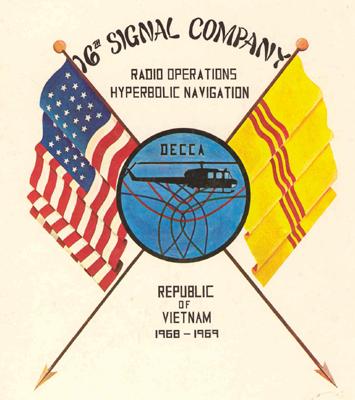 |
| This is the insignia from the 16th Signal Company. (Image source unknown) |
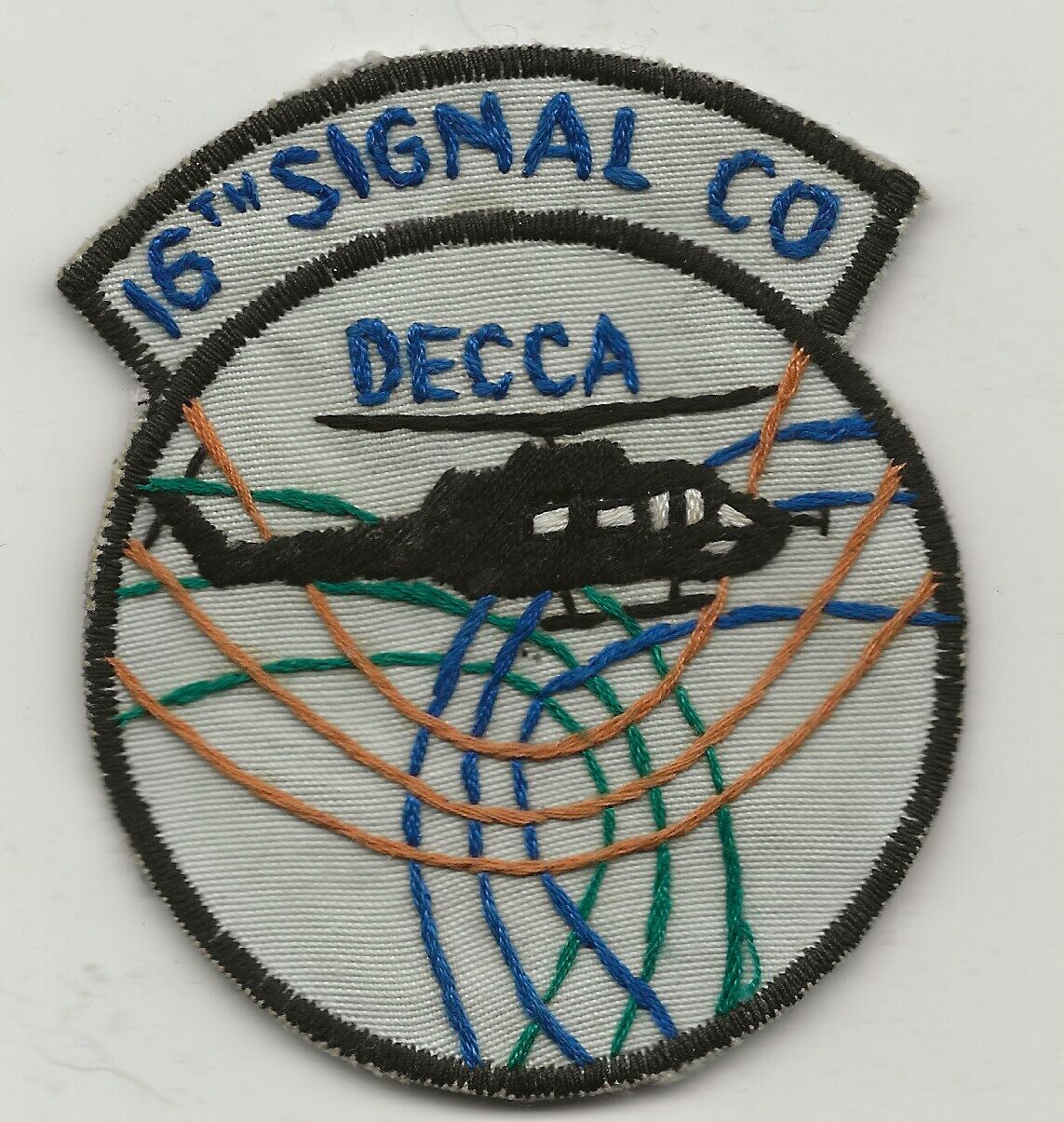 |
| 16th Signal Company jacket patch. (Image via E-bay) |
PHOTOS FROM THE SOUTH CHAIN
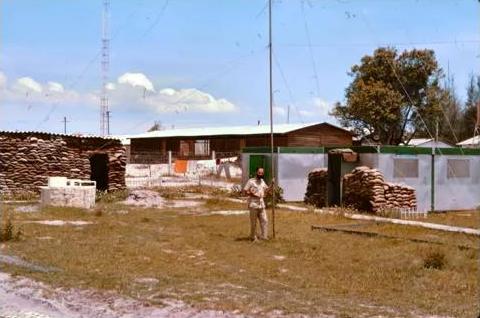 |
| Van Keip - Master |
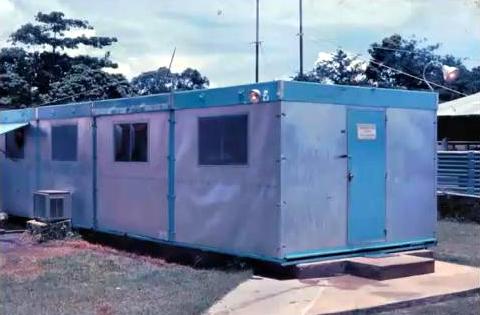 |
| Tây Ninh - Red Slave |
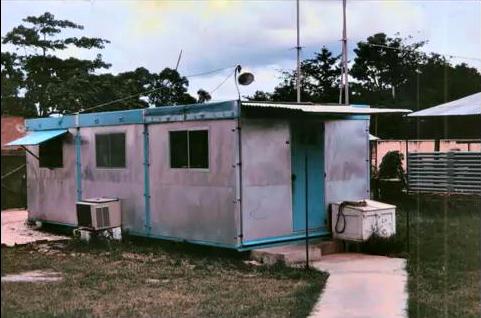 |
| Tây Ninh - Red Slave |
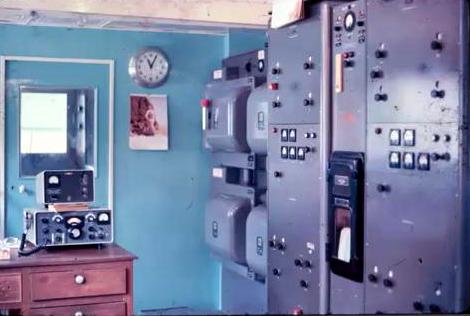 |
| Tây Ninh - Red Slave |
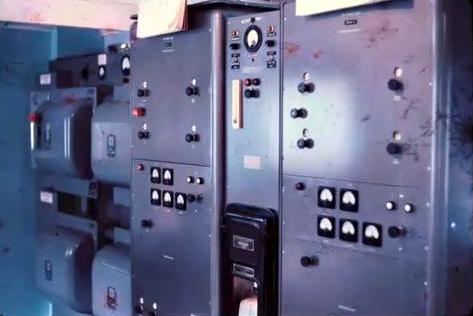 |
| Tây Ninh - Red Slave |
 |
| Tây Ninh - Red Slave coil house. |
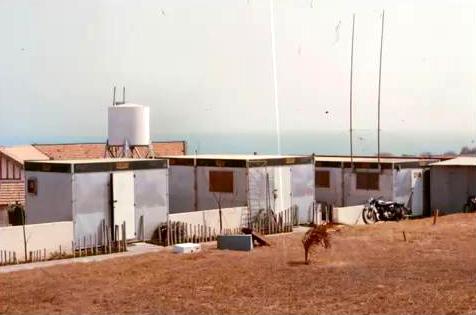 |
| Phan Thiet - Green |
 |
| Phan Thiet - Green |
| All photos in this table by Christopher Rose |
Select this link to see Decca operations in Vietnam
Mar 22/21